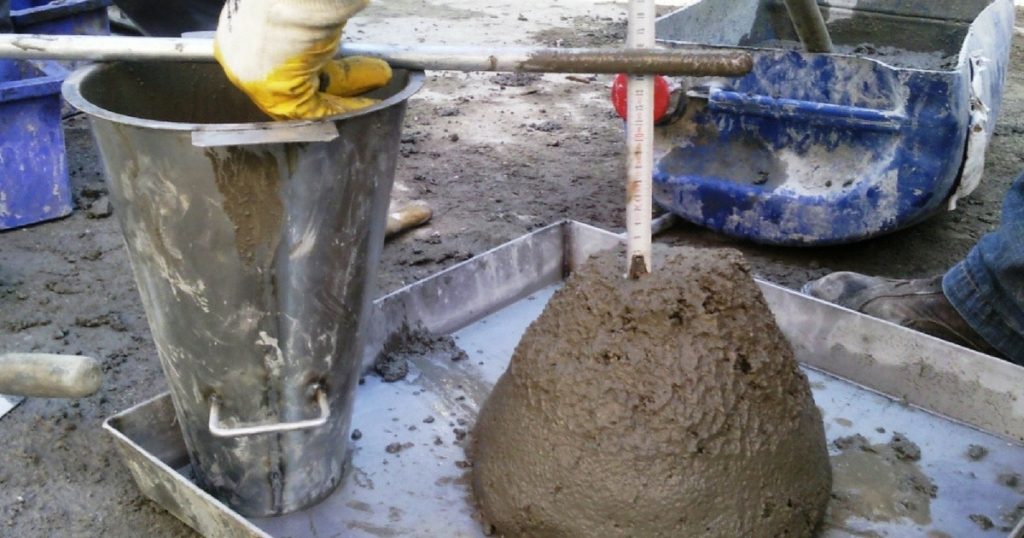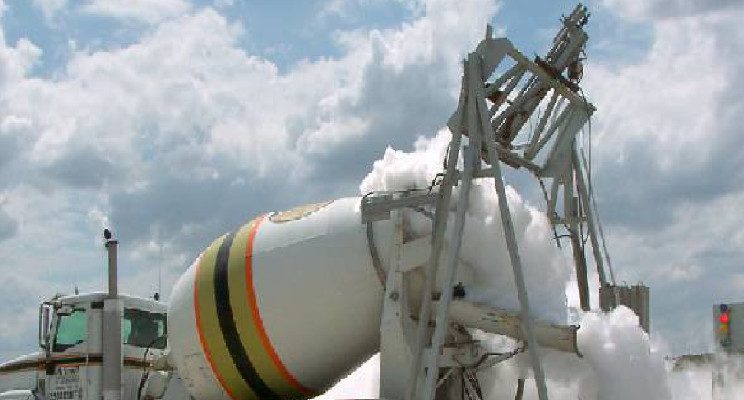Slump is a measure of concrete workability. In this article, we discuss the major Reasons for Concrete Slump Loss and how to prevent them.
What is Slump Loss?
Fresh concrete is known to lose its workability with time. Slump loss is the term used to describe this event. Addition of set-retarding water reducers, usually lignosulfonates, was shown to be fairly enough to increase slump retention.

What is normal?
The normal and ordinary thing is that concrete will always lose slump. Otherwise, it will not harden.
Concrete progressively loses all of its slump during the regular slow congealing process known as “setting” before beginning to harden.
What is abnormal?
The abnormal thing is when concrete loses slump at a higher rate than normal.
Most codes specify that the initial setting time of Portland cement should not be earlier than 45 min and the final setting time should not be later than 6.5 h.
So, if setting occurs faster than this, means that concrete is losing slump at a higher rate than expected.
Four Causes of Slump Loss
1- Time Delays
When considering slump loss, most of the time people forget talking about the time. In fact, every minute after mixing the concrete is important when it comes considering the slump loss.
The setting time starts to count once the cement touches the water during the mixing process because of a process called hydration of cement.
This means that every minute starting from the mixing time of concrete is directed towards the loss of slump including the processes of mixing, transporting, placement, and finishing of concrete.
In summary, losing slump is just a function of time.
How to prevent time delays?
Three tips you can follow to minimize the effects of time delays on the slump loss.
- Try to cut all the possible causes for delay.
- Do trial batching of concrete mix in lab conditions that simulate the actual job conditions to make sure that the obtained concrete will behave as expected in site.
- Start the concrete mix with the slump value that is a little bit high to consider all the factors that may accelerate the slump loss and the time passed since mixing. This will allow more than enough time for concrete activities such as transportation and placement.
2 – Wrong use of admixtures
This is the second reason that may cause excessive slump loss and it is related to the extra compounds that are added concrete to enhance existing properties or add new properties for concrete.
The wrong use of admixture may make this process faster than usual, making it difficult to deal with concrete and of course, a lot of defects will occur within the concrete due to rapid setting.
How to prevent this?
Make sure that use the correct type admixtures according to the permissible dosages from the manufacturer.
Do trial batch of the concrete mix using the same admixture you are going to apply in field to make sure no adverse effects exist.
3 – High Temperature
When the external temperature is high, concrete losses its slump at a faster rate than usual since higher temperature cause the evaporation of mixing water rapidly and also accelerates the hydration rate of cement and thus, reduces the setting time.
Whatever additional slump loss factors may be present in a specific circumstance, they appear to be amplified swiftly at higher temperatures.
Precautions in high temperature
- If necessary, cooling concrete materials such as aggregate and water by using ice or liquid nitrogen.
- Use supplementary cementitious material (SCMs) to reduce the slow the rate of setting time (meaning increasing the time concrete takes to set).
- Use retarding admixtures.

4- Dry Aggregates
Imagine using an aggregate either fine or coarse that is either dry or has latent absorption capacity. Of course, it will accelerate the slump loss.
Precautions on Aggregates
- Sprinklers are used to moisten and pre-saturate the aggregate so that it won’t absorb moisture from the concrete after mixing or while being pumped.
- Apply shading to the aggregate
- Use of highly absorbent poor aggregate is not recommended.
Reasons for Concrete Slump Loss
Read Also:
